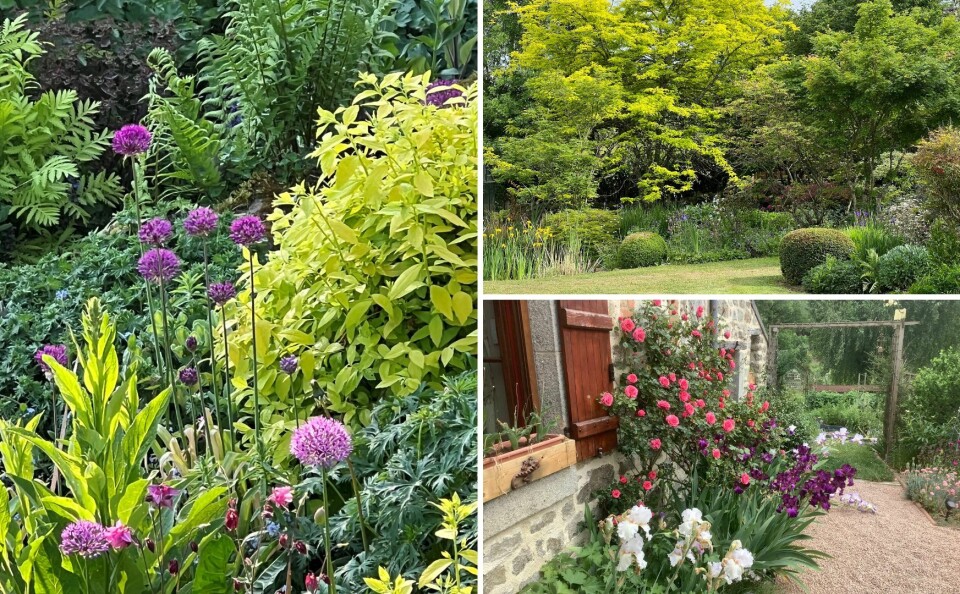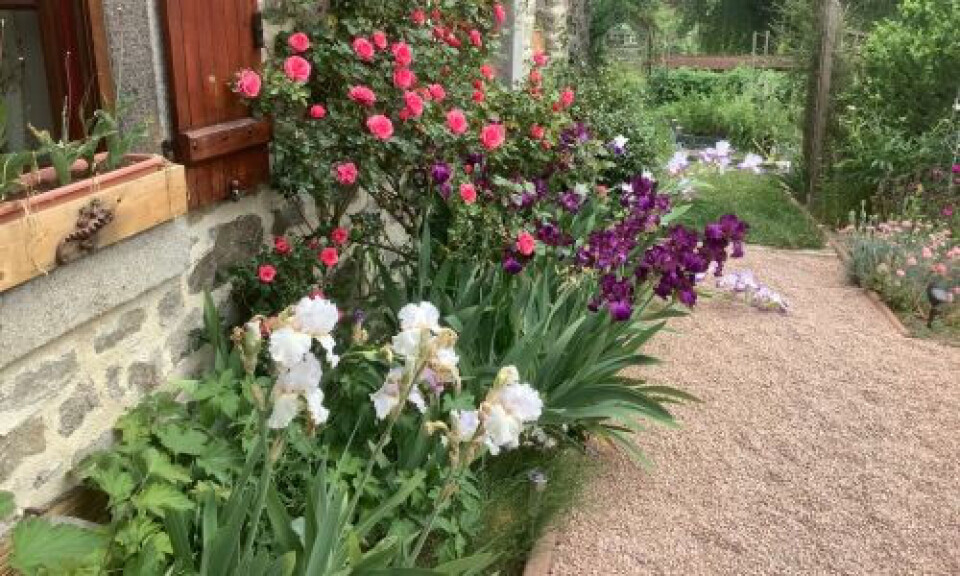-
Gardener's digest: reusing rainwater and April vegetable patch plans
Tips and tricks for your jardin in France, from sunloungers to swimming pool inspiration
-
What you should do to your garden in France in spring
Weeding, pruning, sowing, preparing the lawn…here is how to welcome sunnier days
-
Gardening in France: how to overcome daffodil dilemmas
Expert solutions for daffodil 'blindness' and 'lively' composting techniques to try
Lovely Limousin gardens to visit in June with Open Gardens scheme
Gardeners across France throw open the gates to their private paradises - we explore two gems in Creuse and Haute-Vienne

Welcome to another June of summer-fresh gardens to visit. Make sure you check the Open Gardens website regularly as new open days are added weekly, even daily, at this time of year.
A day ticket usually costs €5, while for only €15 you can buy an annual ticket and visit gardens everywhere in France.
Read more: Open Gardens group offers a warm welcome to all volunteers in France
From Lincolnshire to Limousin
Lynn Hutchinson’s garden in the Creuse (1 Prondessagne, 23200 Saint-Avit-de-Tardes; Tel: 05 55 66 46 99) is open on Sunday 11 June, from 10:00 to 17:00.
From her former garden in the flatlands of Lincolnshire to the rolling countryside near the National Park of Millevaches in the Limousin, Lynn has pursued a lifetime interest in gardening.
Throughout her 19 years in France, she has also had plenty of time to observe changes in the climate.
“It is much drier now and we’ve extended the pretty dry borders around the house considerably as a result. I’ve got a bit of colour theming going on there, which I enjoy.”

Photo credit: Lynn Hutchinson
Digging with a crowbar
To extend this area the Hutchinsons have had to be tough, as well as imaginative, because each planting hole – whether for peony, iris or rudbeckia – must be dug out of the gravel with a crowbar.
“We have a lot of reservoirs for water storage, but I really only water plants now and then, perhaps, for the first few weeks of a plant’s life. After that I haven’t really got the time.”
A consequence of the drier conditions has been, she believes, lower fruit yields both from the trees that were originally resident in the orchard and their own, newer, plantings.
Challenging day to night temperatures
Lynn says that one of her biggest learning curves has resulted from the differential between nocturnal/diurnal temperatures.
“One February it was -20 °C at night and then 26°C the following day. Plants have to be tough to cope with that and in the first couple of years I lost more than a few!”
Fortunately, this also makes it essential for her to indulge her passion for propagating when it comes to penstemons and other slightly tender perennials that might have survived a Lincolnshire winter.
The results of her work should benefit the June visitor as much as Lynn’s own garden: all she asks is a sensible donation, funds to go to the Jardins Ouverts charities.
Planting on dry, steep bank
Part of the garden has been created on top of an old road surface and the vestiges of that include a large, rather tricky 70m-long bank, with mature trees growing on it, once the roadside verge.
Varying from a height of 5m to 12m, this represents a massive planting challenge by anyone’s standards.
“It is 100% dry at all times, partly because of those mature oaks and ash lining the top, and all of the classic rockery plants that I put in died.
“The soil is not really deep enough for larger bulbs like daffodils, although we have planted cyclamen in the shadier areas and they are thriving, as are prostrate junipers and Iris foetidissma.”
Happy propagating in the greenhouse
Predictably, given her obsession, one of her favourite areas of the garden is the greenhouse.
“I could spend hours there. In the winter I fill it with herbs and salads, although what I plant does have to be quite tough because it’s unheated and it gets pretty cold.
“But it’s the space I love most in this garden – the way I can just walk out from the house through our very gardened area and into the ‘tamed’ wilder areas beyond.”
Read more: Dianthus or pinks are a classic passalong cutting
English garden in Haute-Vienne
Le Jardin du Bagnol, Annie Specht-Carpentier’s garden in the Haute-Vienne (37 Le Grand Bagnol, 87250 Fromental; Tel: 06 34 95 26 49) is open on Saturday 3 and Sunday 4 June from 11:00 to 18:00.
Annie admits to having been ‘seduced’ many years ago by the ‘jardin à l’anglaise’ of a lady who was to become her mother-in-law.
Her new passion took her to join gardening groups in Belgium and to voraciously read books written by the likes of Jelena de Belder (a Slovenian-Belgian botanist) and Princess Greta Sturdza.
Photo: Inspired by English gardens; Credit: Annie Specht-Carpentier

Abandoned land on an old farm
Trips to English gardens reinforced the overwhelming urge to make a garden of her own, with the outcome that she and her husband purchased an old farm, with land of one hectare, in the Limousin.
The year 1994 saw them clearing land that had lain abandoned for eleven years. ‘Gardeners know what that’s like!’ laughs Annie.
Little by little they made plans and began to plant, but the process was slowed by the fact that their home and work were 700km away in Belgium and real progress was only possible during holidays.
Annie comments that at this time there were few private gardens in France open to the public, no specialist nurseries and no plant fairs.
It was because of this that many a ‘special’ plant made the long journey south from Belgium – or even England – to the garden at Le Bagnol.
Hedging planted as wind-breaks
The garden evolved in two parts – a lower ‘English cottage-style’ garden and an upper more naturalistic planting – but one of the first things the couple did was to plant mixed hedging around the entire area, to provide a complementary screen and backdrop for future plantings, as well as protection against wind.
It has also supplied a rich diversity of habitat for birds and other small mammals.
Read more: Gardeners in France told to stop cutting hedges in bird nesting season
Planting for acid soil
The acid soil has allowed Annie to indulge her love of ericaceous plants such as acers.
Now she estimates that they have over 2000 different kinds of plant settled happily in the garden and, since many of their original tree plantings are reaching maturity, these offer shade during the increasingly hot summers, providing shelter for ferns and beautiful foliage plants.
New passion for gardening in France
She is sure the French passion for gardening has evolved considerably in the last 20 years.
There are now so many young specialist nurseries, as well as the opportunity to meet their owners at plant fairs.
“And the internet means that you can buy that ‘most coveted rare plant’ without even having to leave home!”
Another new trend in France is the interest in winter gardening and Le Jardin du Bagnol is keenly following the trend, with plantings of hamamelis, hellebores and bulbs.
It’s a case of “watch this space”, says Annie. Perhaps we can imagine winter and spring openings in the future?
Related articles
France wildfires: MPs vote to hike fines for not clearing your garden
Dream of a detached house with garden fades in France
Practical tips for buying rainwater collector as sales surge in France
























